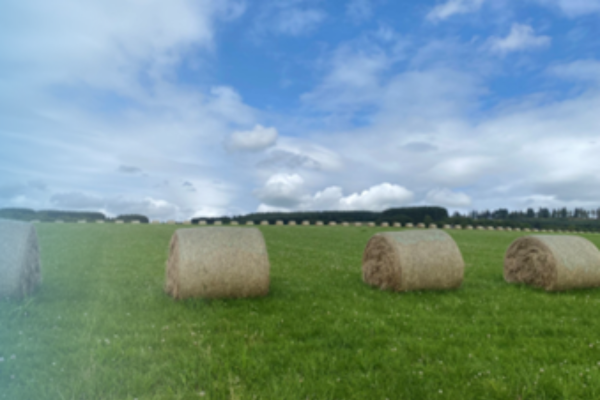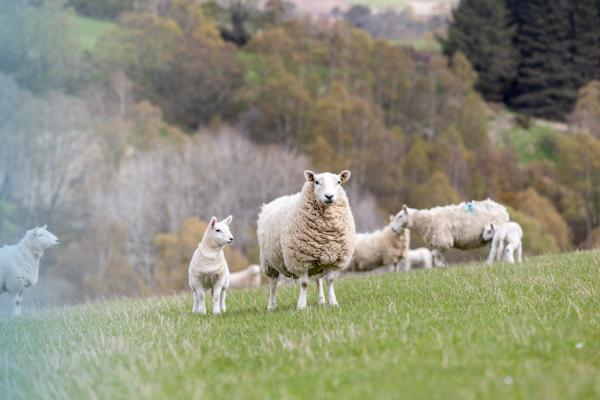Agribusiness News October 2024 – Sector Focus: Bale Grazing
30 September 2024Bale grazing is a method of out wintering cattle. This method has been adapted from practices in Canada and North America and offers numerous benefits to cattle producers. However, prior planning of the system is essential.
The System
A bale grazing system consists of either silage or hay bales being placed in fields ahead of the winter, and then utilised by cattle along with deferred grazing during the winter months.
Typically, once forage is conserved in the summer or autumn, the selected wintering fields are closed off from grazing livestock, allowing a wedge of grass to be built up for the winter. Bales are placed along the field margins when ground conditions allow in the summer/autumn thus avoiding the need to transport bales out to grazing livestock in the winter.
When the system is in place, the grazing cattle are allocated a certain area of grass and a set number of bales according to the number of animals, the size of field, grass yield, etc., with an electric wire being used to control access to the allocated area.
The bales can either be offered to the animals by:
- Rolling a ring feeder over them
- Rolling the bales out along the ground
Planning
For a bale grazing system to work well, it is essential that the field or fields have a well-drained soil to prevent damage from poaching and also to prevent nutrient loss. The site should have good shelter for livestock and a protected water source, to prevent pollution and erosion of water courses.
If the field has a slope, it will aid the rolling out of bales throughout the winter, allowing gravity to assist. The earlier that bales are placed in the wintering field, will benefit the system; in that the grass will be able to grow longer around the bales, allowing more cover on the soil, which will protect it from trampling.
To understand how many bales are required in a bale grazing system. A calculation is outlined in section 5 of outwintering-strategies-booklet-497866-sep-2022.pdf (sruc.ac.uk)
Good electric fencing equipment is required for the system. A single electric wire will typically suffice for the system. However, depending on ground conditions, a back fence may be required to prevent ground conditions from trampling.
As with all outwintering systems, it is vitally important to have a contingency plan for severe weather events. Is there another area the animals could go onto – stubble fields, a sacrifice area, next year’s silage ground, or temporarily into a shed, etc?
Benefits
There are numerous technical and financial benefits to a bale grazing cattle system. These include:
- With no requirement for bedding, mixing and carting forage out to fields each day, the labour requirement is reduced considerably compared to typical wintering systems; with labour only being required to move the electric fence and to open up the bales.
- Equally, time is saved not having to muck out sheds or to cart/spread dung or slurry. With a bale grazing system, all manure is evenly spread over the wintering field throughout the bale grazing period.
- With all forage being sited in situ prior to winter; tractor usage throughout the winter is extremely reduced. This results in more efficient use of labour, lower fuel costs, less wear and tear on machinery and a lower carbon footprint.
- From a grassland management perspective, grazing the deferred grass in the winter, allows for dead leaf material to be removed from the sward, allowing a higher quality spring growth with greater diversity of the sward.
- With the animals being grazed behind a wire, there is an even distribution of urine and faeces across the field, benefitting the return of nutrients into the ground. This in turn brings further benefits with regards maintaining and enhancing the organic matter of the soil.

Photo: Bale grazing set up in the late summer
Kirsten Williams, Kirsten.Williams@sac.co.uk
Sign up to the FAS newsletter
Receive updates on news, events and publications from Scotland’s Farm Advisory Service










